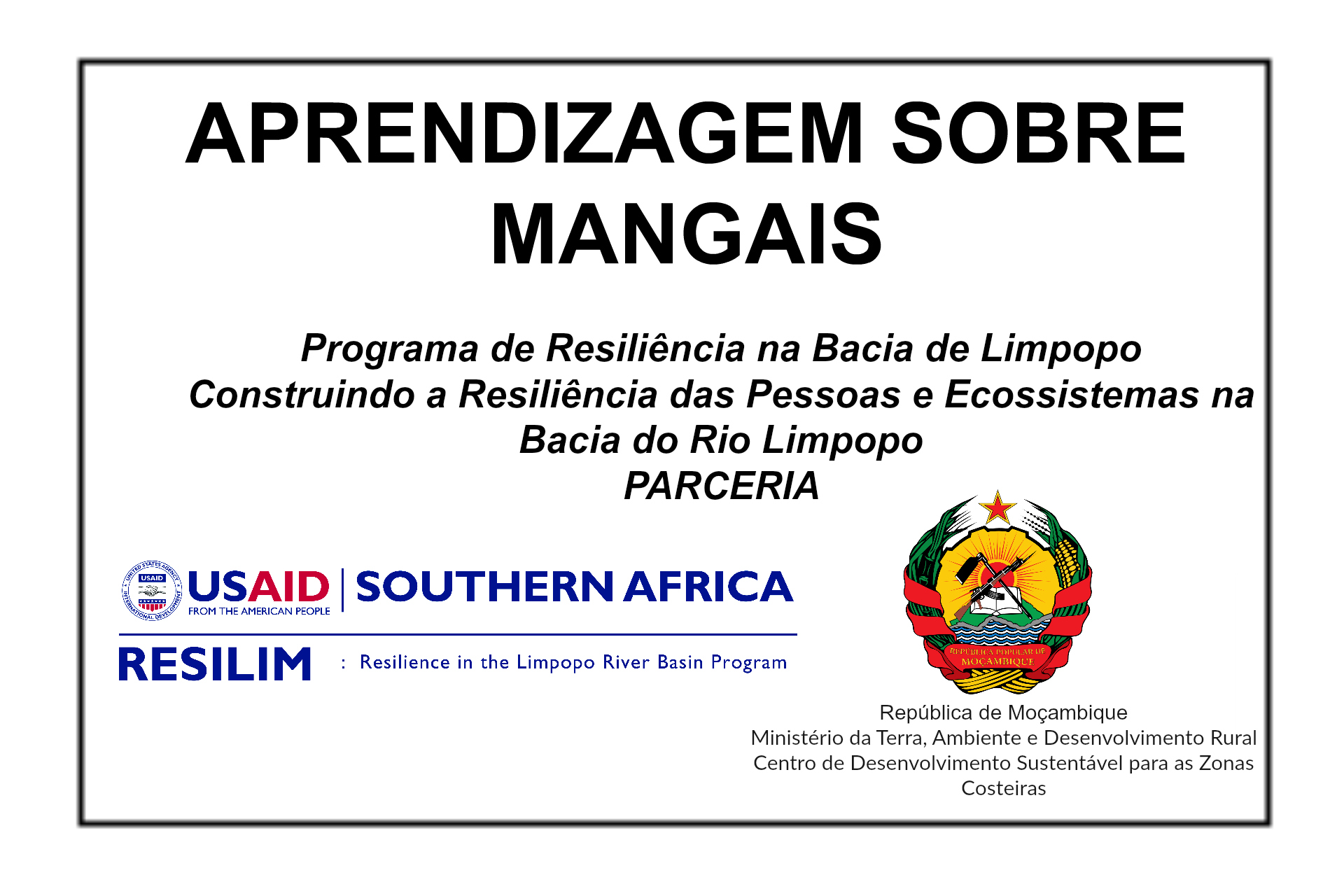| MITADER Ministério da Terra, Ambiente e Desenvolvimento Rural |
        |
Centro de Desenvolvimento Sustentável para as Zonas Costeiras |
Aprendizagem Sobre Mangais
Mapping of Healthy and Degraded Mangrove Vegetation in the Limpopo Basin Estuary | |
|
The overall objective is to map the mangrove vegetation communities and degraded Mangrove forest in the Limpopo basin estuary is one of the most important livelihood Mangroves are under constant flux due to both natural (e.g. erosion, aggradations) and anthropogenic factors. In the last three decades, forest losses because of The 2000 floods that hit Zonguene Administrative Post had a great negative impact in Remote sensing and GIS are increasingly used in mangrove forestry change tracking This study aims to map the mangrove degraded areas in Limpopo estuary to inform the conservation measures and form a basis to guide formulation of interventions under component II of the RESILIM Program, developing an adaptive management and responses to threats. Results generated from this study could provide an additional opportunity for a better understanding of mangrove forests geared towards their sustainable management.  Mapping of mangrove vegetation Communities and degraded areas in The limpopo basin estuary - Mapping of mangrove vegetation Communities and degraded areas in |
|
|
|
|
Veja também: Avaliação Económica do Ecossistema dos Mangais no Estuário do Limpopo Avaliação económica do ecossistema dos mangais no estuário do Limpopo-2014 Nenhuma notícia nesta categoria, de momento... |